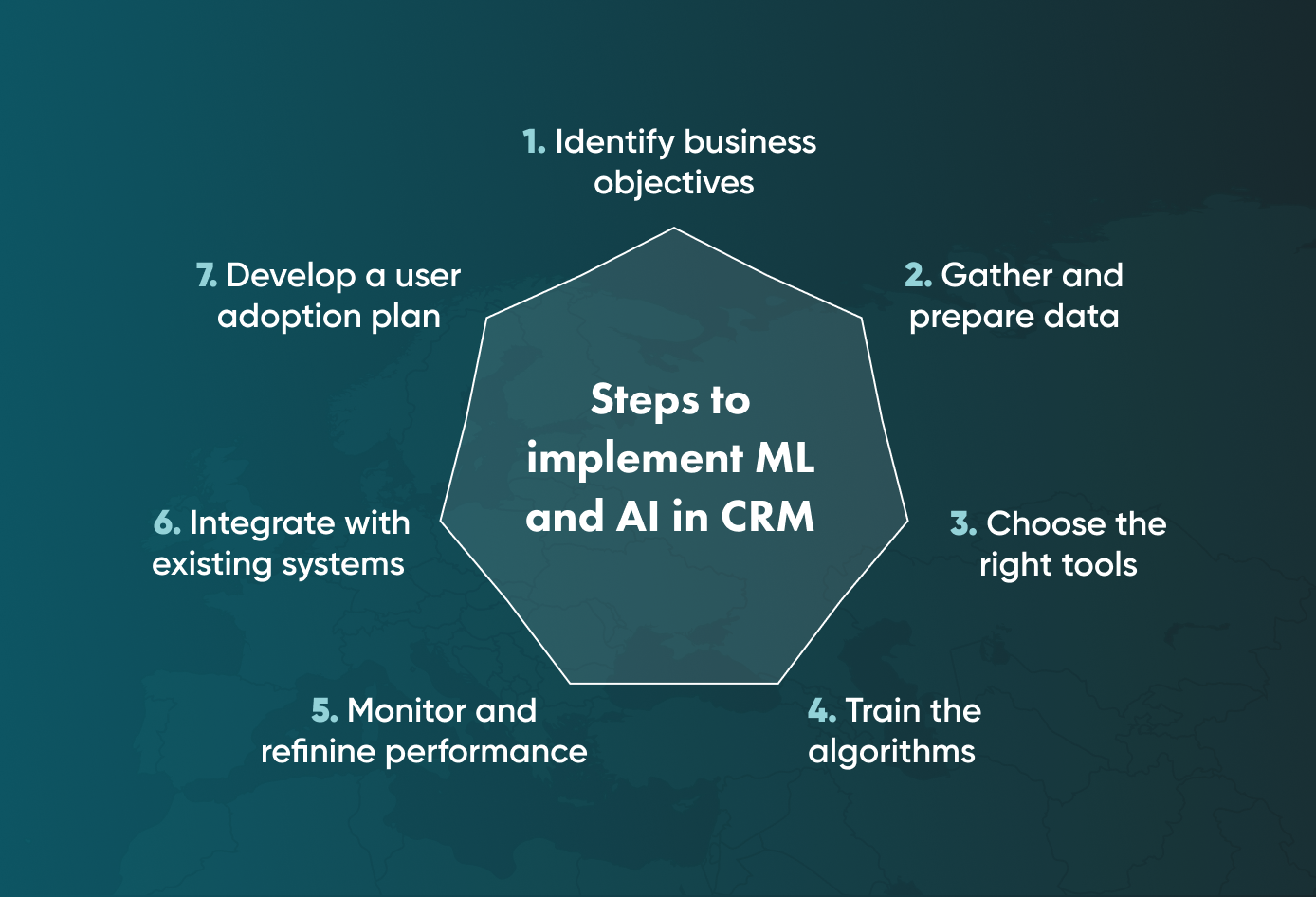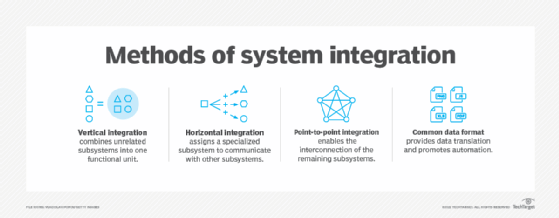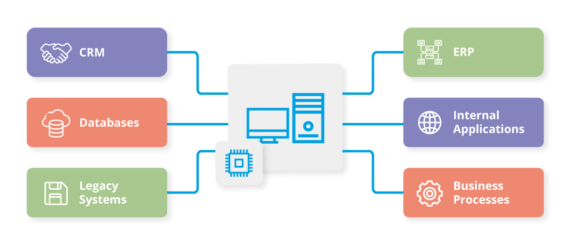To integrate CRM software with your existing systems, assess compatibility and choose integration methods. Utilize APIs or middleware to streamline data flow.
Integrating CRM software with your current systems enhances efficiency and improves customer management. A seamless connection allows for real-time data sharing, leading to better decision-making. Understanding your existing infrastructure is crucial before integration. Identify the key systems that need connecting, such as email, marketing tools, or ERP software.
Choose the right integration method based on your needs, whether through APIs, third-party middleware, or custom solutions. This approach not only saves time but also boosts productivity by reducing data entry errors. Ultimately, a well-integrated CRM system supports your business goals and fosters stronger customer relationships.

Credit: gowombat.team
Introduction To Crm Integration
CRM integration connects your Customer Relationship Management software with other tools. This process helps streamline operations and improve data flow. Integrating CRM systems enhances collaboration among teams. It also provides a unified view of customer interactions.
Benefits Of Integrating Crm Software
Integrating CRM software offers several advantages:
- Improved Efficiency: Automated processes save time and reduce errors.
- Better Data Management: Centralized data helps maintain consistency.
- Enhanced Customer Insights: Access to comprehensive customer data supports better decision-making.
- Increased Sales: Integration streamlines sales processes, boosting revenue.
- Seamless Communication: Teams can easily share information and collaborate.
Common Challenges In Crm Integration
Many businesses face challenges during CRM integration:
- Data Quality Issues: Inaccurate or outdated data can lead to problems.
- Cost Constraints: Integration can be expensive without proper planning.
- Technical Difficulties: Compatibility issues may arise with existing systems.
- User Adoption: Employees may resist using new tools and processes.
- Limited Resources: Lack of time or personnel can hinder integration efforts.
Understanding these challenges helps in planning a smoother integration process.

Credit: www.techtarget.com
Pre-integration Planning
Pre-integration planning is crucial for successful CRM integration. Proper planning ensures your systems work together smoothly. Follow these steps to set a solid foundation.
Identifying Business Objectives
Start by defining clear business objectives. This helps in aligning your CRM with your needs. Consider these key points:
- Sales Goals: What revenue targets do you aim for?
- Customer Retention: How will you improve customer loyalty?
- Marketing Strategies: What campaigns require CRM support?
- Operational Efficiency: Which processes need streamlining?
Document these objectives. Share them with your team. This clarity guides your integration process.
Mapping Out The Integration Process
A detailed integration map helps visualize the entire process. Follow these steps to create an effective map:
- Assess Existing Systems: Identify all current software.
- Determine Data Flow: Understand how data will move.
- Choose Integration Method: Decide between API, middleware, or manual import.
- Plan for Testing: Allocate time for quality assurance.
- Set a Timeline: Create a realistic project timeline.
Use a table to summarize integration steps:
| Step | Description |
|---|---|
| 1 | Assess Existing Systems |
| 2 | Determine Data Flow |
| 3 | Choose Integration Method |
| 4 | Plan for Testing |
| 5 | Set a Timeline |
By mapping out these steps, you prepare for a smooth integration. Each step builds on the last, ensuring nothing is overlooked.
Choosing The Right Crm Software
Choosing the right CRM software is crucial for your business. A good CRM helps manage customer relationships. It can streamline processes and improve efficiency. Select a system that fits your specific needs. Consider your goals and budget before making a choice.
Must-have Features For Your Business
Not all CRM systems are created equal. Here are essential features to consider:
- User-Friendly Interface: Easy to navigate for all users.
- Contact Management: Store and organize customer information effectively.
- Sales Automation: Automate tasks to save time.
- Reporting and Analytics: Gain insights into sales performance.
- Integration Capabilities: Connect with existing tools seamlessly.
- Mobile Access: Access CRM on-the-go via mobile devices.
Comparing Different Crm Providers
Comparing various CRM providers helps find the best fit. Use the following table for quick reference:
| CRM Provider | Key Features | Pricing |
|---|---|---|
| Salesforce | User-friendly, customizable, extensive integration options. | Starts at $25/month per user. |
| HubSpot | Free tier available, great marketing tools, easy to use. | Free and paid plans start at $50/month. |
| Zoho CRM | Affordable, multi-channel support, automation features. | Starts at $12/month per user. |
| Microsoft Dynamics 365 | Integration with Microsoft apps, customizable dashboards. | Starts at $65/month per user. |
Evaluate each provider based on your business needs. Focus on the features that matter most. Look for user reviews and ratings. This will guide you to the best choice.

Credit: www.baass.com
Preparing Your Data For Integration
Preparing your data for integration is crucial. Clean, organized data ensures smooth transitions. It helps systems work together efficiently. Follow these steps to set your data up for success.
Data Cleaning Essentials
Data cleaning is the first step. It involves removing errors and duplicates. Clean data enhances accuracy and reliability. Here are some essential tips:
- Remove Duplicates: Identify and eliminate duplicate records.
- Standardize Formats: Ensure names, dates, and addresses follow the same format.
- Correct Errors: Fix typos and incorrect information.
- Fill in Missing Data: Identify and complete missing fields.
- Validate Data: Check the accuracy of your data against reliable sources.
Data Migration Strategies
Data migration is the process of transferring data. A clear strategy is key for a successful migration. Here are some effective strategies:
- Plan Your Migration: Create a detailed plan outlining each step.
- Choose the Right Tools: Use reliable tools for data migration.
- Test Before Full Migration: Run tests on a small data set first.
- Backup Data: Always back up your data before migrating.
- Monitor the Process: Keep track of the migration to address issues promptly.
Following these strategies leads to a successful data integration. A well-prepared data set minimizes issues and enhances efficiency.
Staff Training And Onboarding
Effective staff training and onboarding are vital for CRM success. Proper training helps staff understand the new system. They need to feel confident using it daily. A smooth onboarding process encourages adoption and maximizes benefits.
Developing A Training Program
Create a structured training program tailored to your team’s needs. Include various learning formats to cater to different styles:
- Interactive workshops
- Online tutorials
- One-on-one coaching
- Documentation and manuals
Ensure the program covers key topics:
- System navigation
- Data entry and management
- Reporting features
- Integration with existing tools
Schedule training sessions at convenient times. This helps maximize participation. Use real-life scenarios to make learning engaging. Encourage questions and discussions throughout the training.
Monitoring Adoption Rates
Track how well staff adopts the new CRM system. Use tools to measure engagement and performance. Key metrics to monitor include:
| Metric | Description |
|---|---|
| User logins | Frequency of system access by staff |
| Feature usage | How often different features are used |
| Feedback | Staff satisfaction and challenges |
Regularly collect feedback from staff. Adjust training based on their needs. Celebrate milestones to keep motivation high. Recognize those who excel in using the new system. This fosters a culture of continuous improvement.
Customization And Configuration
Customization and configuration are vital for CRM success. These steps help align the CRM with your specific business processes. Tailoring CRM solutions enhances user experience and boosts productivity.
Tailoring Crm To Your Business Needs
Every business is unique. Your CRM should reflect that uniqueness. Consider these customization options:
- Custom Fields: Add fields specific to your industry.
- Dashboards: Create dashboards that show important metrics.
- Workflows: Automate processes to save time.
- Reports: Generate reports that matter to your team.
Use the following table to visualize customization benefits:
| Customization Type | Benefit |
|---|---|
| Custom Fields | Capture relevant information easily. |
| Dashboards | Monitor performance at a glance. |
| Workflows | Streamline repetitive tasks. |
| Reports | Track progress and insights. |
Setting Up User Roles And Permissions
Setting user roles and permissions is essential. It ensures data security and user accountability. Follow these steps to manage access:
- Identify Roles: Define roles like admin, sales, and support.
- Assign Permissions: Grant access based on job functions.
- Regular Reviews: Periodically check and update roles.
- Training: Educate users about their access levels.
Effective role management leads to:
- Improved security
- Clear accountability
- Enhanced team collaboration
Testing The Integration
Testing the integration of your CRM software is crucial. It ensures all systems work together smoothly. This phase identifies issues early, saving time and money. Follow the steps below to conduct effective testing.
Conducting Pilot Tests
A pilot test helps you understand how the integration performs. Start with a small group of users. This group can provide feedback and identify issues.
- Choose Users: Select a diverse group.
- Define Goals: Set clear objectives for the test.
- Run the Test: Monitor how the systems interact.
- Collect Feedback: Use surveys or interviews.
- Make Adjustments: Refine the integration based on feedback.
Document the results. This documentation helps with future tests and adjustments.
Troubleshooting Common Issues
Integration can lead to common problems. Identify these early to resolve them quickly. Below are some frequent issues and their solutions.
| Issue | Solution |
|---|---|
| Data Sync Errors | Check field mappings and data formats. |
| Performance Lag | Optimize data transfer settings. |
| Access Problems | Review user permissions and roles. |
| Incompatibility | Update software versions as needed. |
Keep a log of all issues and solutions. This log helps in future integrations. Continuous monitoring ensures your CRM works efficiently.
Maintaining And Updating Your Crm System
Keeping your CRM system updated is crucial. Regular maintenance ensures smooth operations. A well-maintained CRM can enhance user experience and data accuracy.
Regular Maintenance Checks
Regular maintenance checks help identify issues early. Schedule these checks monthly or quarterly. Here are some key areas to focus on:
- Data Quality: Ensure data is accurate and current.
- System Performance: Monitor for speed and efficiency.
- User Feedback: Collect and address user concerns.
- Integration Health: Check connections with other systems.
Use the table below to track your maintenance schedule:
| Maintenance Task | Frequency | Responsible Party |
|---|---|---|
| Data Cleanup | Monthly | Data Team |
| System Updates | Quarterly | IT Team |
| User Training | Biannually | HR Team |
Planning For Future Scalability
Scalability ensures your CRM grows with your business. Consider these factors for future planning:
- User Capacity: Ensure the system can handle more users.
- Data Storage: Plan for increased data needs.
- Feature Expansion: Look for systems that allow new features.
- Integration Flexibility: Choose CRM that connects with other tools.
Investing in a scalable CRM saves time and money. It also prepares your business for growth.
Measuring The Success Of Integration
Measuring the success of your CRM integration is vital. It shows how well the new system works with your existing tools. Tracking metrics and gathering feedback helps refine the process. This ensures better performance and user satisfaction.
Analyzing Crm Metrics And Kpis
To measure integration success, focus on key metrics and KPIs. These indicators reveal how effectively the CRM fits your needs. Here are important metrics to track:
- Customer Satisfaction Score (CSAT) – Measures customer happiness.
- Net Promoter Score (NPS) – Assesses customer loyalty.
- Sales Growth – Indicates revenue increases.
- Lead Conversion Rate – Measures leads turning into customers.
- Time to Resolution – Tracks how fast issues are solved.
Use a table to organize your metrics:
| Metric | Purpose | Target Value |
|---|---|---|
| Customer Satisfaction Score (CSAT) | Measures customer happiness | Above 80% |
| Net Promoter Score (NPS) | Assesses customer loyalty | Above 50 |
| Sales Growth | Indicates revenue increases | 20% per quarter |
| Lead Conversion Rate | Measures leads turning into customers | Above 15% |
| Time to Resolution | Tracks how fast issues are solved | Less than 24 hours |
Gathering Feedback For Continuous Improvement
Feedback is essential for refining CRM integration. Regularly seek input from users. This ensures the system meets their needs. Here are ways to gather feedback:
- Surveys: Create short surveys after key interactions.
- Interviews: Conduct one-on-one sessions with users.
- Focus Groups: Gather a group for in-depth discussions.
- Usage Analytics: Analyze how often features are used.
- Support Tickets: Review common issues users report.
By implementing feedback, you can improve user experience. This leads to better adoption and success of your CRM integration.
Best Practices For Ongoing Crm Management
Managing your CRM system effectively is crucial for success. Ongoing management ensures data accuracy, user adoption, and system integration. Following best practices can enhance your CRM’s performance and longevity.
Ensuring Data Security And Privacy
Data security and privacy are vital for CRM management. Protecting customer information builds trust. Here are key steps to ensure data security:
- Use Strong Passwords: Require complex passwords for all users.
- Implement Two-Factor Authentication: Add an extra layer of security.
- Regularly Update Software: Keep your CRM system up to date.
- Train Employees: Educate staff on data privacy practices.
Always back up your data. Use encryption for sensitive information. Monitor access logs regularly. This helps identify unauthorized access.
Leveraging Integrations With Other Tools
Integrating your CRM with other tools enhances functionality. It streamlines processes and improves efficiency. Here are some popular integrations:
| Tool | Benefit |
|---|---|
| Email Marketing Software | Automate campaigns and track customer interactions. |
| Project Management Tools | Coordinate tasks and manage deadlines effectively. |
| Accounting Software | Sync financial data for accurate reporting. |
| Social Media Platforms | Engage with customers and gather insights. |
Choose tools that fit your business needs. Ensure seamless data flow between systems. Regularly evaluate the effectiveness of integrations. Adjust as needed to maximize results.
Frequently Asked Questions
How Can Crm Software Enhance System Integration?
Integrating CRM software with existing systems streamlines data flow and improves communication. It centralizes customer information, allowing for better decision-making. Enhanced integration leads to increased efficiency and productivity, ultimately improving customer relationships and sales processes.
What Systems Can Crm Software Integrate With?
CRM software can integrate with various systems like email, marketing automation, and accounting tools. Popular platforms include Salesforce, HubSpot, and Zoho. This flexibility ensures a seamless experience across your organization, enabling you to leverage existing tools effectively.
Why Is Crm Integration Important For Businesses?
CRM integration is crucial for businesses as it improves data accuracy and reduces manual entry errors. It creates a unified view of customer interactions, leading to better customer service. Ultimately, this integration supports informed decision-making and boosts sales performance.
How Do I Choose The Right Crm For Integration?
Choosing the right CRM involves assessing your business needs and compatibility with existing systems. Look for features like customization, scalability, and user-friendly interfaces. Research user reviews and seek demos to ensure the CRM meets your integration requirements.
Conclusion
Integrating CRM software with your existing systems can streamline operations and enhance customer relationships. By following the right steps, you ensure a smoother transition. The benefits of improved efficiency and data management are significant. Embrace this change to unlock your business’s full potential and drive growth effectively.
Start your integration journey today!




Leave a Reply